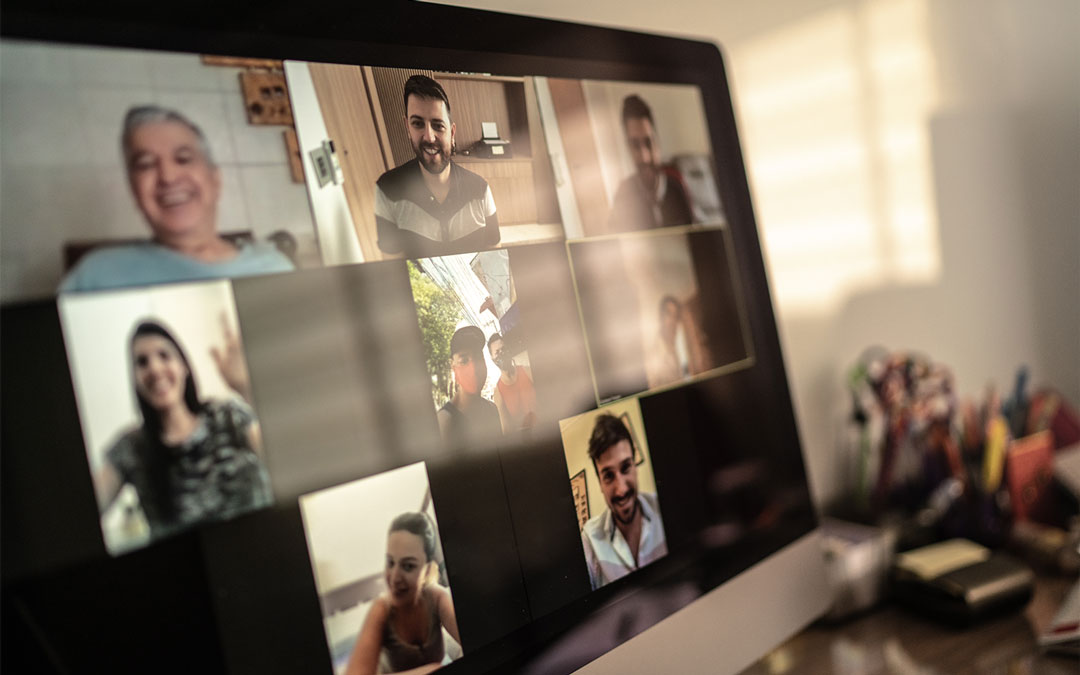A recent Forbes article on virtual offsite events for building teams just caught our eye. The author talked about the different value elements that in-person offsites provide team members, including social aspects of being together — even outside of the official agenda for the offsite.
For the past few months, we have been immersed in virtual strategic planning sessions and training sessions that normally would be conducted in person. The article made us think of what has been working and what is not working with these types of events. While many people are writing about virtual meeting logistics, we liked that this article focused on the broader topic of engagement and motivation of people in a virtual world.
As we think about the strategic planning events we have shifted to a virtual world, several things come to the surface in terms of different participant engagement levels and behaviors.
Here are our thoughts on how you should think about virtual planning sessions where you need everyone’s best inputs:
ONE: Don’t think of your virtual planning session as a replacement for a physical session
Everything is different about the virtual world. One early mistake we made was to just try to adapt the same physical meeting agenda and content to a virtual environment. The reality is that activities aren’t the same, sharing content is different, giving input is different, etc.
THE CHANGE UP — The better starting point is thinking about your meeting outcomes and then determine virtual activities and steps that can be accomplished to meet those meeting outcomes. It could be that you need to divide up your overall session into three different virtual sessions, and each session has one key activity.
PAYOFF — You can energize your audience by bringing a whole new creative approach to planning. When you hear comments like “this is so cool and different”, you know you are on the right path.
TWO: Rethink your content and time spent explaining things to the audience
While some team members are still experiencing discomfort with the new business “normal,” it is important as a leader to demonstrate how the team can use this time to make deliberate changes that will benefit everyone.
What’s an easy target you can use to start? Meetings.
One of the biggest lessons learned is that time spent explaining a concept in a virtual environment needs to take on average less than ½ of the time as it does explaining live in a room. Why? In a physical space, your explanation slides (we call them “talk to” slides), can be non-verbally enhanced by the facilitators walking around the room and asking questions, reading non-verbal reactions, etc. In the online world, you don’t have that same luxury.
THE CHANGE UP — We have found that reducing your “talk to” slides to no more than 5 minutes of time in any given 30-45 minute section of your planning session helps keep your attendees from drifting off.
PAYOFF — Your audience will feel more like they are part of an active participation event and less like part of the listening/training session. We hear people talk about how they like being constantly engaged with the content as opposed to just sitting and contemplating it.
THREE: Leverage technology to level the participant playing field
In a physical room with an audience you can see people who are engaged vs. bored. But that brings a crutch for leaders and facilitators as well. We tend to gravitate toward those “stars” of the room and their energetic answers, even if we don’t realize this bias.
THE CHANGE UP — In a virtual world, technology helps to balance out the input from a wider range of participants. For example, you can pose some questions and ask everyone to use chat for their answers. Then, you can call out random chats posted to have people verbally talk more about what they posted. And by inserting polling questions, you can quickly get the pulse of the audience on an issue in seconds.
PAYOFF — We have heard from more audience members who normally would be quieter in an in-person session that they feel more comfortable sharing their thoughts and ideas, and more part of the influence of the session. That’s a win!
Our advice is to test out all three of these suggestions in your next planning session. We’d love to hear your ideas as well for those things that are changing the participation and behavior of your audience members.
Contact Us Today
We make it easy to jump start success. Simply contact us and share your current team challenge or need, and we’ll respond with program ideas to innovate your team performance.

